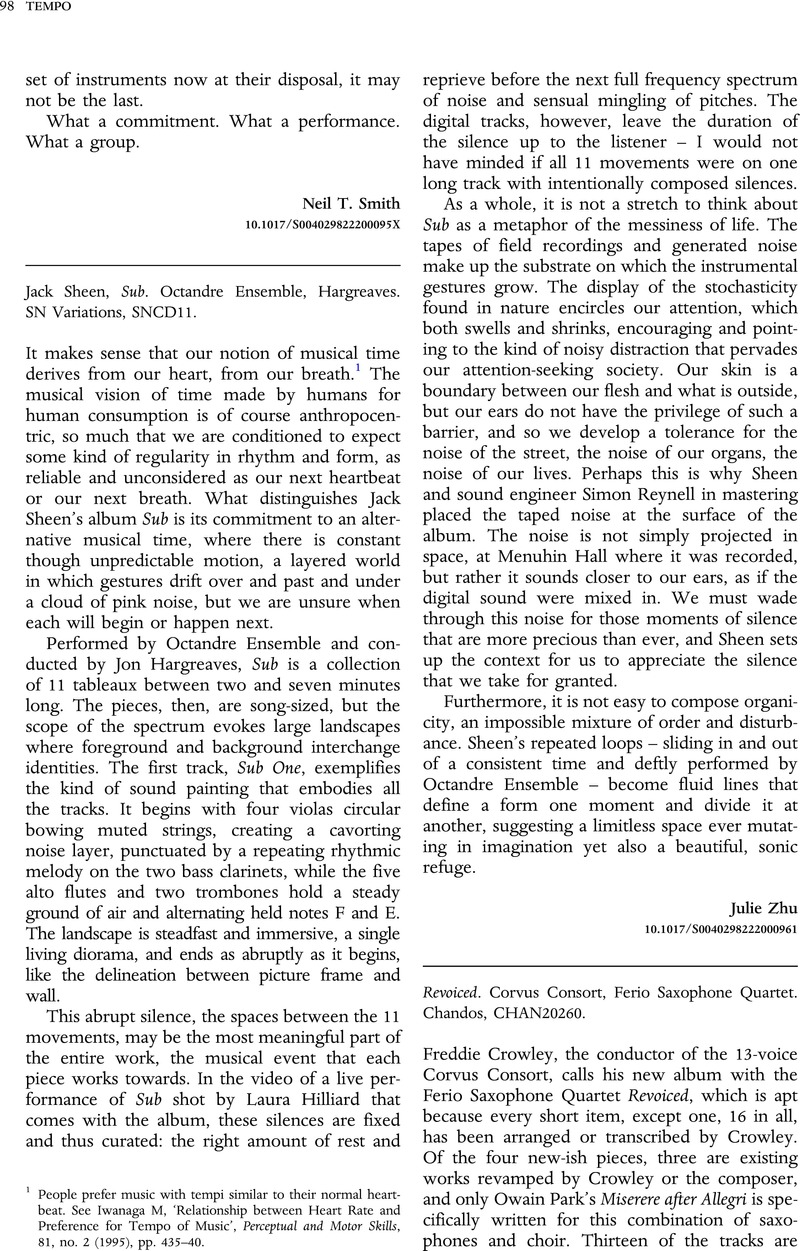No CrossRef data available.
Published online by Cambridge University Press: 11 January 2023

1 People prefer music with tempi similar to their normal heartbeat. See Iwanaga, M, ‘Relationship between Heart Rate and Preference for Tempo of Music’, Perceptual and Motor Skills, 81, no. 2 (1995), pp. 435–40CrossRefGoogle ScholarPubMed.